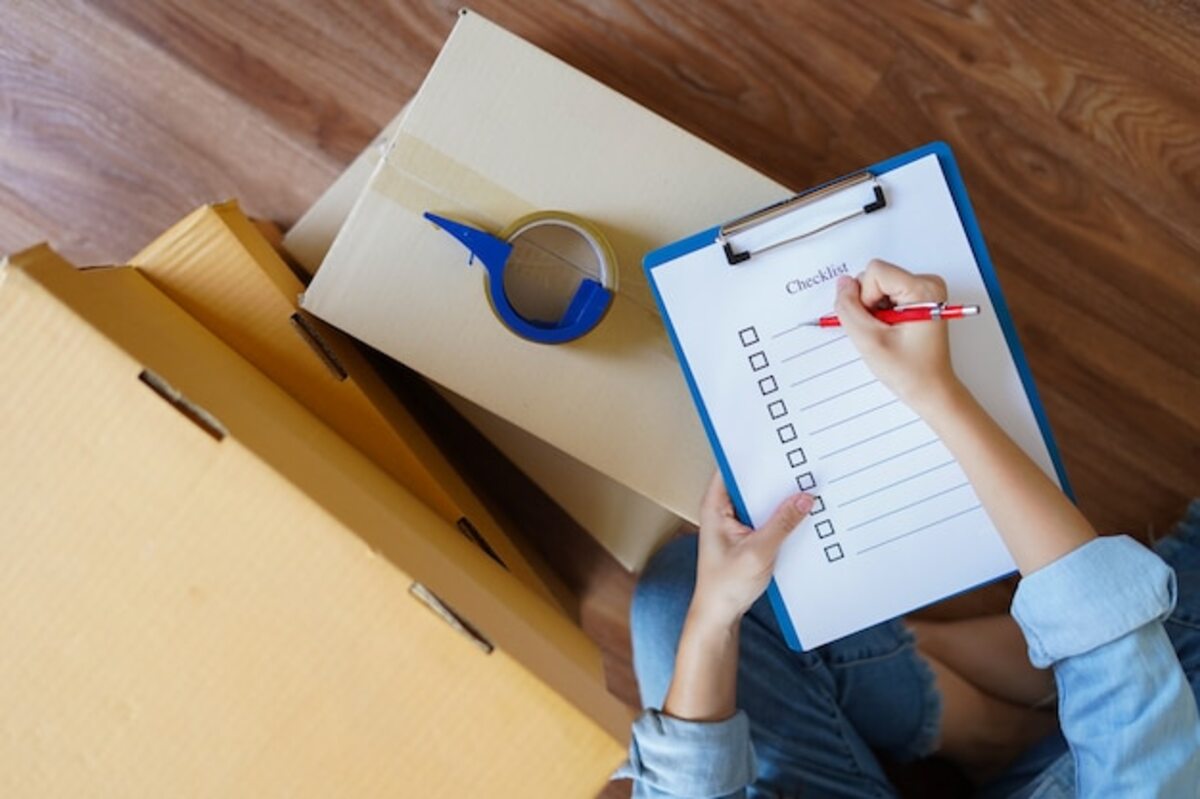How to prepare your move for a stress-free exit from the rental

Are you about to end your lease and feeling overwhelmed by the idea of moving? Don't worry, preparing for your move can be a straightforward and stress-free process if you follow the right steps. In this article, you will discover how to effectively organize yourself so that your departure from the rental is smooth and without setbacks. From advanced planning to the final details, here you will find practical tips that will help you leave your home in perfect condition and enjoy this new stage with peace of mind.
The importance of early planning
Advance planning is key to ensuring that your move goes smoothly and without setbacks. By starting to organize yourself early, you can break down tasks into manageable stages, allowing you to avoid the accumulated stress of leaving everything to the last minute. Take some time to make a list of everything you need to do before the moving date: from notifying your landlord to managing utilities and coordinating transportation logistics. This overview will help you stay focused and avoid unpleasant surprises along the way.
Additionally, early planning gives you the opportunity to reflect on what you really want to take with you to your new home. It’s the perfect time to get rid of unnecessary items or things you no longer use. By doing this task calmly, you will not only reduce the number of things you need to pack, but you will also be able to start your new phase with a more organized space and free from emotional burdens associated with objects from the past. Remember that a move is not just about changing locations; it is also an opportunity to renew yourself and give a fresh start to your life.
2. Essential checklist for preparing the move
To ensure your move goes smoothly, it is essential to have a checklist that allows you to stay organized. Start by creating a task list that includes all the necessary aspects of the move, from notifying your landlord of your departure to coordinating the moving service. Be sure to include specific deadlines for each task, such as picking up boxes and packing materials, as well as disconnecting and reconnecting services like electricity and internet. Having all this in writing will help you visualize the process and prevent you from forgetting important details amid the chaos.
In addition to general tasks, take time to sort your belongings. Review each room and decide which items you want to take with you, which you can donate or sell, and which should be discarded. This will not only make your move easier by reducing the volume of things you need to pack, but it will also allow you to start your new phase with a more organized space. Consider labeling the boxes according to their contents and the room they belong to in your new home; this will make the unpacking process much simpler when the time comes. With this checklist in hand, you will be better prepared to face any challenges that arise during your transition to a new home.
3. How to communicate with your landlord correctly
To ensure a smooth transition during your move, communication with your landlord is key. From the beginning of your moving process, it is essential to maintain an open and honest channel. Notify your landlord well in advance of your intention to vacate the property, as this is not only a courtesy but may also be stipulated in your lease agreement. Be sure to ask about the specific procedures for handing over the property and any additional requirements you need to fulfill before leaving.
It is also important to document all your interactions with the landlord in writing. This includes emails or messages that evidence agreements reached regarding the move-out date and the conditions for the return of the deposit. If problems arise during the process, such as pending repairs or disputes over minor damages, having a clear record will help you resolve them without issues. Remember that being proactive in your communication will not only facilitate the moving process but also contribute to maintaining a good relationship with your landlord, which can be beneficial if you need references for another rental in the future.
4. Strategies for sorting and getting rid of your belongings
One of the keys to a successful move is sorting and getting rid of belongings you no longer need. Before you start packing, take some time to review each room and assess which items you have used in the past year. If there are objects that have been stored without use, consider whether it is really worth taking them with you to your new home. You can create three categories: keep, donate/sell, and discard. This process will not only help you reduce the number of things you need to transport, but it will also allow you to start your new chapter with a clearer and more organized environment.
By donating or selling your belongings in good condition, you can make life easier for others and possibly earn a little extra income for your moving expenses. Organize a garage sale or use online platforms to sell those items you no longer need. On the other hand, make sure to properly dispose of what can no longer be reused; many communities offer collection services for recycling or responsible disposal. This way, you will not only be alleviating the physical burden of your move but also positively contributing to the environment as you prepare for this new chapter in your life.
5. Tips for Packing Your Things Like an Expert
When it comes to packing your belongings, the key is organization. Start by gathering all the necessary materials: boxes of different sizes, tape, bubble wrap, and labels. Sort your items by room or category before you begin packing. This will not only make the process easier but will also help you know exactly what you have and where everything is when it comes time to unpack. Use smaller boxes for heavy items like books and larger ones for lighter items like clothes or pillows. Don't forget to fill empty spaces with crumpled paper or clothing to prevent items from shifting during transport.
It is also crucial to label each box with its contents and the room it belongs to. This will save you time and effort when you arrive at your new home. If you feel creative, you can even use a color-coding system to quickly identify the contents of each box according to the room. It is also advisable to pack the items you use the least first and leave the essentials for last; this way, you will avoid complications in your day-to-day life while you are in the moving process. Remember, a well-planned move is key to ensuring a stress-free exit from the rental.
6. Transportation options: Rent a van or hire professionals?
When the time comes to move, one of the most important decisions is how to transport your belongings. You can choose to rent a van, which gives you the flexibility to manage your own schedule and load your things at your own pace. This option can be especially advantageous if you have friends or family willing to help you, as sharing the workload makes it lighter both physically and emotionally. However, you should consider factors such as the cost of the rental, fuel, and the need for a driver experienced with larger vehicles.
On the other hand, hiring professionals for your move can provide you with the peace of mind you need during this process. Although it may mean a higher expense, having an experienced team ensures that your belongings are handled with care and efficiency. Additionally, professional services often include packing and unpacking, which significantly reduces the time and effort involved. The choice between these options will depend on your budget, the amount of things you need to move, and how comfortable you feel organizing the move yourself. Evaluate your needs carefully to make the best possible decision for a stress-free move.
7. Final review: how to prepare the place for the next tenant
Once you have completed the moving process, it is crucial to conduct a final check of your old home to ensure it is ready for the next tenant. Start by doing a thorough inspection in each room, paying attention to details such as stains on the walls, accumulated dirt, or items that may require minor repairs. Make sure to clean all surfaces thoroughly, including floors, windows, and appliances. This will not only facilitate the transition for the new tenants but may also help you recover your security deposit without issues.
In addition to general cleaning and maintenance, consider leaving a small gift or an informative note for the next tenants. This can include recommendations for local services, instructions on how certain household appliances work, or even a list of nearby places where they can stock up. This gesture will not only welcome them to their new home but will also allow you to leave with a good impression and close this chapter with satisfaction. With this final review and a few additional small details, you can take a confident step toward your new stage without stress or worries about what you leave behind.
8. Legal aspects to consider when ending a rental agreement
At the end of a rental contract, it is crucial to be aware of the legal aspects that may influence your move and the deposit return process. First, make sure to carefully review your contract to understand the specific conditions regarding the handover of the property, the established deadlines, and any clauses related to its condition. It is important to document the state of the apartment or house through photographs or videos before leaving, which can be essential in resolving potential disputes about damages or cleanliness. Additionally, inform yourself about the local regulations regarding deposit returns; in some places, there are specific deadlines that the landlord must comply with to return your money.
Another legal aspect to consider is communication with your landlord. Formally notifying your intention not to renew the lease is an essential step that must be done in writing, adhering to the deadlines stipulated in the contract. This is not only a legal requirement but also a practice that helps maintain a good relationship and avoids misunderstandings later on. Lastly, if you have made modifications to the property during your stay (such as painting walls or installing shelves), check if you need to restore these changes before leaving. Complying with all these aspects will allow you to conclude your lease without legal setbacks and facilitate your transition to a new home.
9. How to conduct an inventory before moving
Creating an inventory before the move is one of the most important tasks to ensure the process goes smoothly. Start by making a detailed list of all the items you own, from large furniture to small utensils. This will not only help you have a clear idea of what you have and what you want to take with you, but it will also make it easier to identify any items that may get lost during the move. Consider using apps or digital tools to record your belongings, as this can simplify the task and allow you to access your inventory at any time.
Once you have created your list, categorize the items into "keep," "donate," "sell," and "discard." This classification will help you reduce the number of unnecessary things and make it easier to pack only what is essential. Be sure to clearly label the boxes with their contents and the corresponding room to expedite unpacking in your new home. A well-organized inventory not only helps you keep track of your belongings but can also be useful if you need to make insurance claims during or after the moving process. With these steps, you will be one step closer to a successful and stress-free move.
10. Benefits of having an organized and stress-free move
Moving in an organized and stress-free manner offers multiple benefits that can transform this often overwhelming experience into a rewarding process. Firstly, by planning each stage of the move, you can significantly reduce the risk of forgetting important items or leaving tasks unfinished. Organization allows you to have complete control over your belongings, ensuring that everything arrives at its new home in perfect condition. By knowing exactly what you need to do and when, you can avoid the anxiety that often accompanies last-minute surprises.
Additionally, a well-planned move facilitates the adaptation to your new space. Upon arriving at your new home with everything in order, you will be able to unpack boxes and organize your belongings quickly, allowing you to enjoy the environment from the very first moment. This sense of accomplishment not only enhances your emotional well-being but also sets a positive tone for starting this new chapter of your life. In summary, an organized move not only minimizes stress during the process but also creates the ideal conditions to fully enjoy the change and comfortably settle into your new home.



